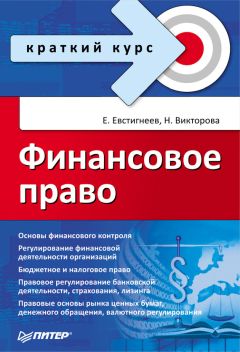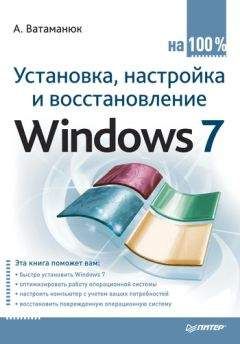Майкл Армстронг - Практика управления человеческими ресурсами
313. Guion R. M. Industrial morale (a symposium) – the problems of terminology, personne; Psychology, 11, pp. 59–64, 1958.
314. Guzzo R. A., Noonan К. А. Human resource practices as communication and the psychological contract, Human Resource Management, Fall, 1994.
315. Hackman J. R., Oldham G. R. Motivation through the design of work: test of a theory, Organizational Behaviour and Human performance, 16(2), pp. 250– 79, 1974.
316. Haley J. Localisation as an ethical response to internationalisation, in International HRM: Contemporary issues in Europe, ed С. Brewster and H. Harris, Routledge, London, 1999.
317. Hall D. T. Human resource development and organizational effectiveness, in Strategic Human Resource Managemnt, ed D. Fombrun, N. Tichy and M. A. Devenna, Wiley, New York, 1984.
318. Hall R. The strategic analysis of intangible resources, Strategic Management Journal, 13, pp. 135–44, 1992.
319. Hall R. Supply Change Management – the challenge for the 21st century, Paper presented to the CIPS Conference at Durham University Business School, 9 May, 1996.
320. Hall L., Torrington D. The Human Resource Function, FT/Pitman, London, 1998.
321. Hall P., Norris P. Development centres: making the learning organization happen, Human Resources, Autumn, pp. 126–28, 1992.
322. Halpin A., Winer В. А. Factorial Study of the Leader Behaviour Description, Ohio State University, 1957.
323. Hamblin А. С. Evaluation and Control of Training, McGraw-Hill, Maidenhead, 1974.
324. Hamel G., Prahalad С. К. Strategic intent, Harvard Business Review, May– June, pp. 63–76, 1989.
325. Handy С. Understanding Organizations, Penguin Books, Harmondsworth, 1981.
326. Handy С. The Future of Work, Blackwell, Oxford, 1984.
327. Handy С. The Age of Unreason, Business Books, London, 1989.
328. Handy С. The Empty Raincoat, Hutchinson, London, 1994.
329. Handy L., Devine M., Health L. 360-Degree Feedback: Unguided missile or powerful weapon? Ashridge Management Group, Berkhamstead, 1996.
330. Hansen M. T., Nohria N., Tierney T. What’s your strategy for managing knowledge? Harvard Business Review, March – April, pp. 106–16, 1999.
331. Harre R. Social Being, Blackwell, Oxford, 1979.
332. Harris H., Brewster С. International human resource management: the European contribution, in International HRM: Contemporary issues in Europe, ed С Brewster and H Harris, Routledge, London, 1999.
333. Harris H., Brewster С., Sparrow P. International Human Resource Management, CIPD, London, 2003.
334. Harrison R. Understanding your organization’s character, Harvard Business Review, 5, pp. 119–28, 1972.
335. Harrison R. Employee Development, 2nd edn, Institute of Personnel and Development, London, 1997.
336. Harrison R. Employee Development, 2nd edn, IPM, London, 2000.
337. Harrison R. Learning and Development, 1st edn CIPD, London, 2002.
338. Harrison R. Learning and Development, 2nd edn, CIPD, London, 2005.
339. Hartley V. Open for Business: HR and human capital reporting, IIES, Brighton, 2005.
340. Hawkins К. А. A Handbook of Industrial Relations Practice, Kogan Page, London, 1979.
341. Hayes Committee on Personnel Management Training for the Management of Human Resources, Department of Employment, HMSO, London, 1972.
342. Health and Safety Executive Beacons of Excellence in Stress Prevention, HSE, London, 2003.
343. Health and Safety Executive. The Development of Case Studies that Demonstrate the Business Benefit of Effective Management of Health and Safety, HSE, London, 2004a.
344. Health and Safety Executive Managing Sickness Absence and the Return to Work, HSE, London, 2004b.
345. Heider F. The Psychology of Interpersonal Relationships, Wiley, New York, 1958.
346. Heller R. The Naked Manager, Barrie & Jenkins, London, 1972.
347. Hendry С. Human Resource Management: A strategic approach to employment, Butterworth-Heinemann, Oxford, 1995.
348. Hendry С., Pettigrew A. The practice of strategic human resource management, Personnel Review, 15, pp. 2–8, 1986.
349. Hendry С., Pettigrew A. Human resource management: an agenda for the 1990s, International Journal of Human Resource Management, 1(3), pp. 17– 43, 1990.
350. Hermanson R. Accounting for Human Assets, Bureau of Business and Economic Research, Michigan State University, Occasional Paper, November, 1964.
351. Herriot P., Hirsh W., Riley P. Trust and Transition: Managing the employment relationship, Wiley, Chichester, 1988.
352. Herzberg F. One more time: how do you motivate employees? Harvard Business Review, January–February, pp. 109–20, 1968.
353. Herzberg F. W., Mausner В., Snyderman В. The Motivation to Work, Wiley, New York, 1957.
354. Heskett J. Managing in the Service Economy, Harvard Business School Press, Boston, MA, 1986.
355. Hiltrop J. M. The changing psychological contract: the human resource challenge of the 1990s, European Management Journal, 13(3), pp. 286–94, 1995.
356. Hirsh W. Succession Planning Demystified, Report No 372, Institute of Employment Studies, 2000.
357. Hirsh W., Carter A. New Directions in Management Development, Paper 387, Institute of Employment Studies, 2002.
358. Hirsh W., Pollard E., Tamkin P. Management development IRS Employee Development Bulletin, November, pp. 8–12, 2000.
359. Hofstede G. Cultural Consequences: International differences in work-related values, Sage, Beverley Hills, CA, 1980.
360. Holbeche L. Motivating People in Lean Organizations, Butterworth-Heinemann, Oxford, 1998.
361. Holt A., Andrews H. Principles of Health and Safety at Work, IOSH Publishing, London, 1993.
362. Honey P. The debate starts here, People Management, 1 October, pp. 28– 29, 1998.
363. Honey P., Mumford A. The Manual of Learning Styles, 3rd edn, Publications, Maidenhead, 1996.
364. Hope-Hailey V., Gratton L., McGovern P., Stiles P., Truss С. A chameleon function? HRM in the ’90s, Human Resource Management Journal, 7(3), pp. 5–18, 1998.
365. Hoque К., Moon M. Counting angels: a comparison of personnel and HR specialists, Human Resource Management Journal, 11(3), pp. 5–22, 2001.
366. Hoyle E. The school as a learning organisation, AERA Conference, San Francisco, CA, April, 1995.
367. Huczynski A., Fitzpatrick M. J. Managing Employee Absence for a Competitive Edge, Pitman, London, 1989.
368. Hull С. Essentials of Behaviour, Yale University Press, New Haven, CT, 1951.
369. Humble J. Programmitis and crown princes, The Manager, December, 1963.
370. Huselid M. A. The impact of human resource management; an agenda for the 1990s, The International Journal of Human Resource Management, 1(1), pp. 17–43, 1995.
371. Huselid M. A., Becker В. Е. Methodological issues in cross-sectional and panel estimates of the human resource-firm performance link, Industrial Relations, 35(3), pp. 400–22, 1966.
372. Huselid M. A., Jackson S. E., Schuler R. S. Technical and strategic human resource management effectiveness as determinants of firm performance, Academy of Management Journal, 40(1) pp. 171–88, 1997.
373. Hutchinson S., Purcell J. Bringing Policies to Life: The vital role of front line managers in people management, CIPD, London, 2003.
374. Hutchinson S., Wood S. Personnel and the Line: Developing the Employment Relationship, IPD, London, 1995.
375. Ichniowski C., Shaw К., Prennushi G. The effects of human resource management practices on productivity: a study of steel finishing lines. The American Economic Review, June, 1997.
376. IDS Human Resource Management Systems, IDS, London, 2002.
377. IDS Searching for the magic bullet, HR Study 783, October, pp. 2–6, 2004.
378. Industrial Participation Association. Towards Industrial Partnership, IPA, London, 1995.
379. The Industrial Society Practical Policies for Participation, The Industrial Society, London, 1974.
380. The Industrial Society Managing Best Practice: Coaching, IDS, London, 1999.
381. The Industrial Society Managing Best Practice, Training evaluation, IDS, London, 2000.
382. Institute of Personnel and Development Code of Professional Conduct, IPD, London, 1993a.
383. Institute of Personnel and Development Quality: People management matters, London, 1993b.
384. Institute of Personnel and Development Code on Employee Involvement and Participation, IPD, London, 1993c.
385. Institute of Personnel and Development People Make the Difference, IPD, London, 1994.
386. Institute of Personnel and Development. The Development of the New Psychological Contract, (unpublished), 1995.
387. Institute of Personnel and Development Key Facts on Psychological Testing, IPD, London, 1997a.
388. Institute of Personnel and Development. The IPD Guide on Implementing Computerised Personnel Systems, IPD, London, 1997b.
389. Institute of Personnel and Development IPD 1998 Performance Pay Survey: Executive Summary, London, 1998a.
390. Institute of Personnel and Development. The IPD Guide to Outsourcing, IPD, London, 1998b.
391. Institute of Personnel and Development. Organisational Development – Whose Responsibility? IPD, London, 1999a.
392. Institute of Personnel and Development. The IPD Guide on Using Your Computerised Personnel Effectively, IPD, London, 1999b.
393. Institute of Personnel Management. Performance Management in the UK: an analysis of the issues, IPM, London, 1992a.
394. Institute of Personnel Management. Statement on Counselling in the Workplace, IPM, London, 1992b.
395. Institute of Personnel and Development. Key Facts on Psychological Testing IPD, London, 1997.
396. Institute of Personnel and Development (1999). Key Facts on References IPD, London, 1999.
397. IRS . Trends in performance management, Employment Review, 1 August. 2003, pp. 12–19.
398. IRS. Recruiters march in step with online recruitment, Employment Review no 792, 23 January. 2004a, pp. 44–48.
399. IRS. Survey of HR roles and responsibilities, Employment Review no 795, March, 2004b, pp. 9–15.
400. IRS. Managing to make the best hiring choice, Employment Review no 796, 19 March, 2004c, pp. 43–48.
401. IRS. Managing attendance the flexible way, Employment Review no 798, 16 April, 2004d, pp. 19–24.
402. IRS. From the outside looking in: third-party dispute resolution, Employment Review, 23 July, 2004e, pp. 8–15.
403. IRS. A graphic illustration: getting the best from recruitment ads, Employment Review no 805, 6 August, 2004f, pp. 42–48.
404. IRS. Training survey, Employment Review no 807, September. 2004g, pp. 10–17.
405. IRS. It pays to talk: gauging the employment relationship, November, 2004i, pp. 9–16.
406. IRS. Systems error? How HR chooses and uses information systems, Employment Review no 812, November, 2004h, pp. 9–15.
407. IRS. Absence essentials: maintaining contact, Employment Review no 818, February, 2005, pp. 23–24.
408. IRS Employee Development Bulletin no 54. Management development, pp. 10–12, 1994.
409. IRS Employee Development Bulletin, November, 2000, pp. 8–12.
410. IRS Employment Trends no 500. 20 years of industrial relations, p. 2, 1991.
411. IRS Employment Trends no 544. Multi-employer bargaining, pp. 6–8, 1993.
412. IRS Employment Trends no 556. Where are the unions going, pp. 14–16, 1994.
413. IRS Employment Trends no 807. Training Survey, pp. 10–17, 2004.
414. IRS Management Review. Using Human Resources to Achieve Strategic Objectives, IRS, London, 1996.




